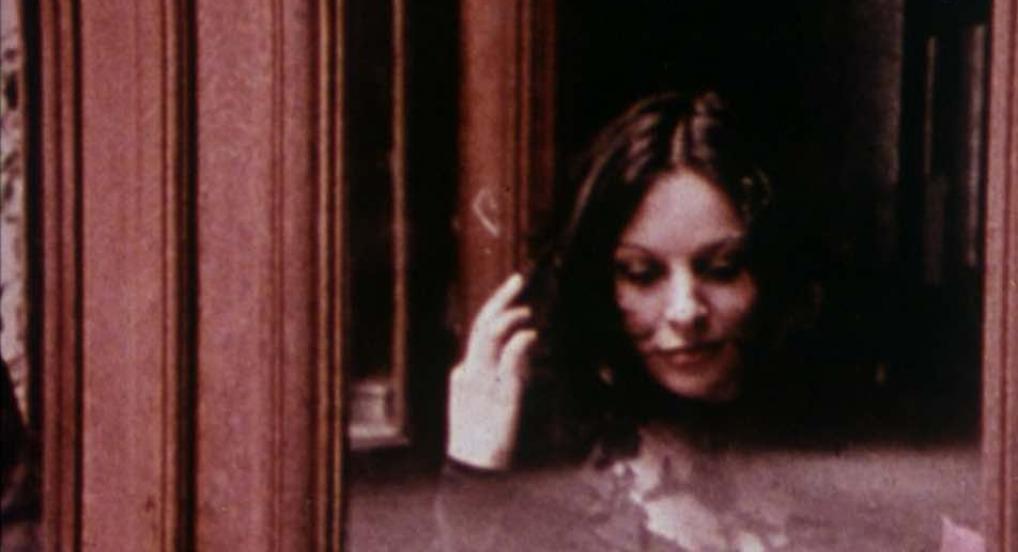"One of the most important films of French avant-garde cinema,
V.W. VITESSE WOMEN displaying Claudine Eizykman’s theory of “cinematographic
energy” as well as creating kinetic movements capable of shaking up
the world and revealing its heterogeneity."
Claudine Eizykman (1945-2018) was a major figure of the French experimental film renaissance since the Seventies. She was filmmaker, theoretician, and professor of cinema at Paris VIII Vincennes University, co-founder of the Paris Films Co-op (1974) and of Cinedoc (1979).
In her book La Jouissance-cinéma (1975) Eizykman takes as a starting point the thought of the philosopher Jean-François Lyotard to develop a theory about how experimental cinema, with its enormous kinetic potential, opens the doors to a new mode of perception, which she calls ‘cinema-jouissance’: a cinema that intensifies the affects, producing pleasure, restlessness or even nausea.
Eizykman put her theory into practice through her own films. Her cinematographic works are marked by a complexity in the very sophisticated construction of images and have been considered among the most original and aesthetically successful of French experimental cinema of the 1970s and 1980s. In V. W. Vitesse Women (1972-1974), included in this program, the rapid, alternating montage, overlays and expressive use of grain aims to break the schemes of industrial narrative cinema and address new ways of relating with images at a purely perceptual level.
This program also includes the full version of Bruine Squamma (1972-77) (bruine: a kind of mist that absorbs and reflects light, and squama: a sliver of the epidermis, shed from the skin), is, in Boris Lehman’s description, ”impressive for the way it is organised and its jamming of a series of sporadic images, infinitely repeated and varied, with no narrative impulse whatsoever. Nothing but flashes, explosions, extinctions, splashes of images which succeed one another, shift forward or back, are superimposed, as in a game of transparent cards."
As a filmmaker Eizykman was awarded the Jury Prize at the Knokke-le-Zoute International Experimental Film Festival in the 1974-1975 edition.
Program
Introduction
Daniel A. Swarthnas (Cinema Parenthèse)
- V.W. Vitesse Women (1972-1974, 16mm, color, silent, 36'00)
"With Claudine Eizykman Vitesses Women gives us a torrential, dazzling film interlacing several sequences that operate at different speeds, sometimes bordering on the threshold of perception, enabling that derangement of the senses Rimbaud so desired, paving the way for other modes of perception." - Michel Nuridsany, Le Figaro.
"At the 5th Knokke Festival in 1974, two films in particular stood out: Ultra-rouge Infra-violet by Guy Fihman and V.W. Women by Claudine Eizykman. These two films were, according to Jacques Ledoux, Conservateur at the Cinémathèque Royale de Belgique "a major discovery, particularly given the fact that since 1949 France had been almost invisible here. In 1974 one had the feeling, for the first time, that there was work which was not only as good as what was going on in the USA, but also had its own originality" Filmmakers such as Kubelka and Conrad have taken their filmmaking back to an atomic structural level in terms of cinema, working with single frames, producing a succession of 24 images of abrupt contrasts. In V.W Vitesse Women, Claudine Eizykman starts with the frame and in several sequences takes it through a montage of alternating several shots, frame by frame, and groups of frame by frame images. By varying the number of frames and sequences she thus runs through the whole gamut of effects in the extremely violent disintegration of her highly figurative images". - Dominique Willoughby Libération, 3 décembre 1979.
- Bruine Squamma (1972-77, 16mm, color, silent, 120'00)
"Claudine Eizykman repeats a few images - a woman on a stairway, the courtyard on an apartment building, a man at a desk - with variations, including superimposition. Sometimes the images appear in an abstracted version of color negative film, a mix of pale pinks and blacks, but more often her colors are relatively natural. Her superimpositions do not take the form of multiple exposures like Lebrat's, in which the light of each layer adds to the others and overall the image grow brighter. Instead she runs her film through the last so that dark areas in another : light is lost rather than gained." - Fred Camper
